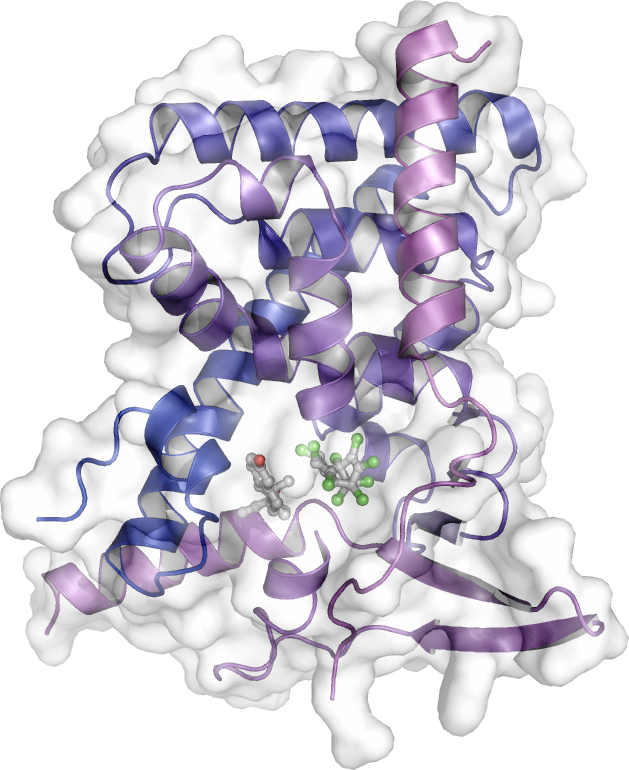W. Bourguet, V. Delfosse
Many chemicals released into the environment bind to nuclear receptors and activate or inhibit their action in an inappropriate spatio-temporal fashion. Referred to as endocrine disruptors (EDs), these compounds cause a wide range of developmental, reproductive, neurological or metabolic defects. The goal of this project is to provide mechanistic insights into the endocrine disrupting action of environmental pollutants.

Structure of the receptor PXR bound to the contraceptive ethinylestradiol and the pesticide trans-nonachlor.
The group of molecules acting as EDs is highly heterogeneous and comprises compounds that are often distantly related to endogenous ligands in terms of size or chemical structure. This group contains substances as chemically different as bisphenols, phthalates, parabens, dioxins, alkylphenols, organotins, benzophenones, or natural compounds such as the phytoestrogen genistein. This large structural diversity renders the interaction of EDs with their biological targets poorly understood and barely predictable. Our correlative analysis of structural, biophysical, cell-based and in vivo data allows revealing a variety of, sometimes unforeseen, mechanisms of action. Characterization of the interactions between nuclear receptors and environmental compounds at the structural and functional levels is important for the assessment of the harmful hormonal activity of a large number of chemicals, the rational design of safer substitutes, and the development of robust in silico screening methods.
Main collaborators : P. Balaguer (IRCM Montpellier), B. Demeneix (MNHN Paris), V. Laudet (OOB Banyuls/Mer)
References : Delfosse et al., Nat Commun., 2015 ; Delfosse et al., PNAS, 2012 ; le Maire et al., EMBO Rep., 2009

